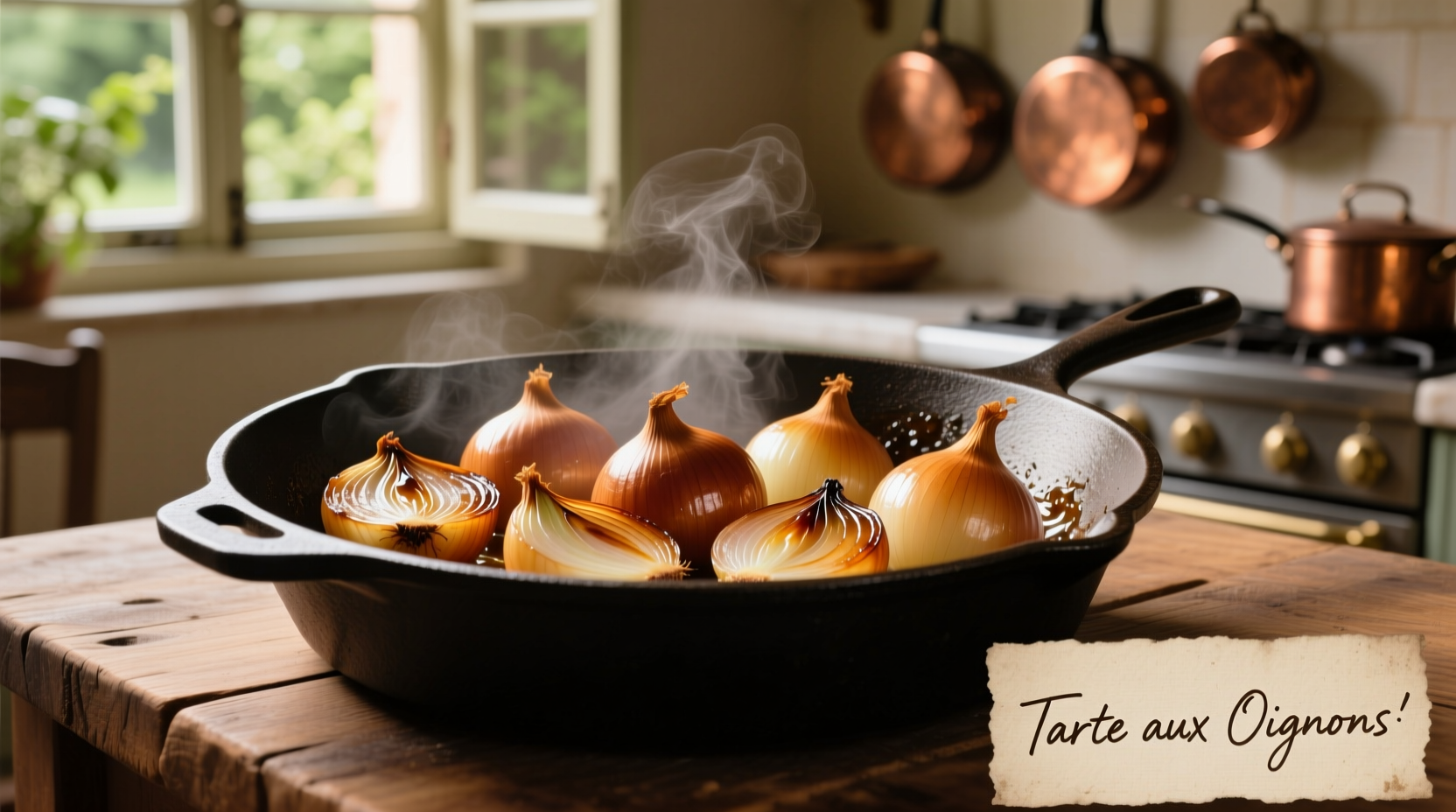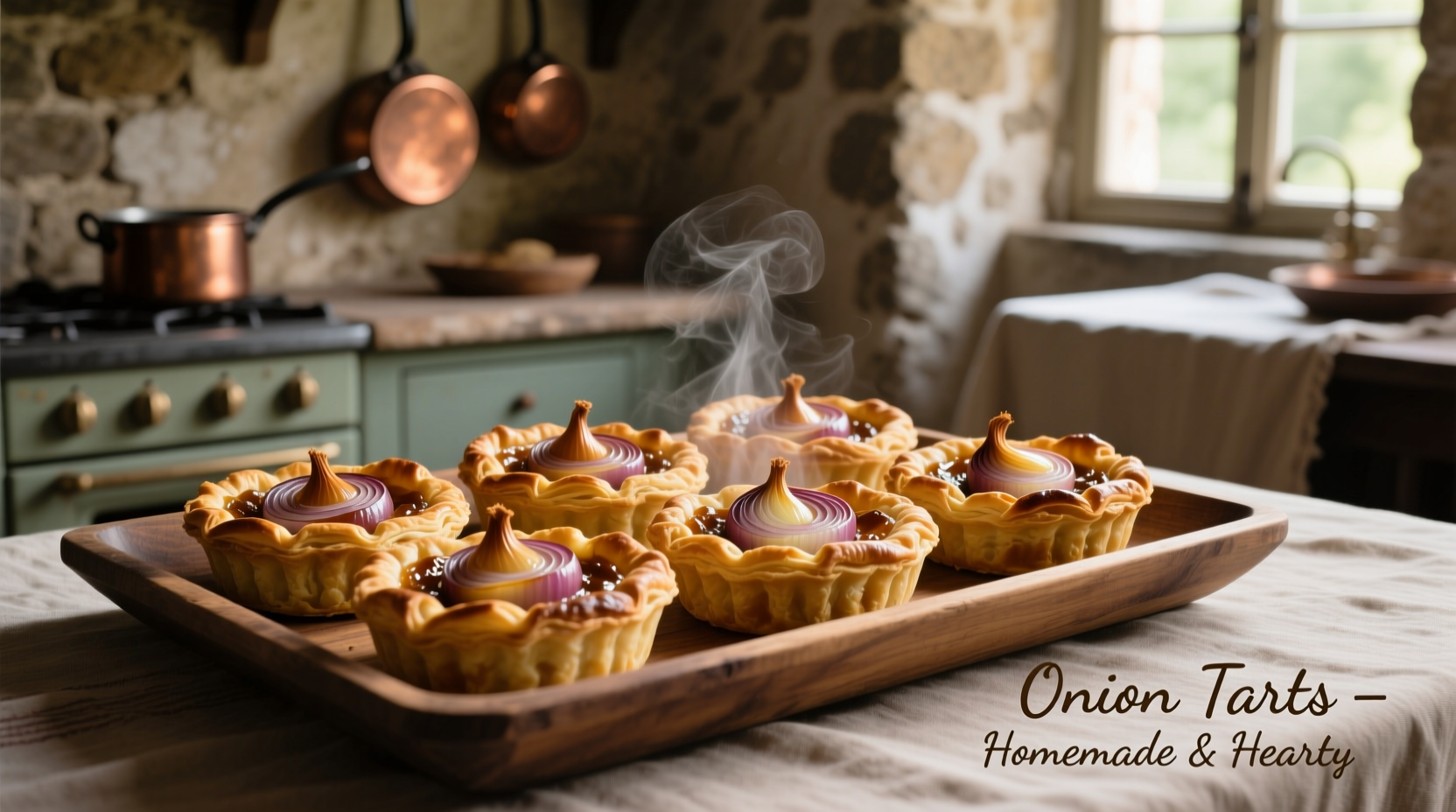Discover why chefs and home cooks alike treasure this deceptively simple dish that transforms humble ingredients into culinary magic. With roots tracing back to medieval French cuisine, onion tarts showcase how patience with caramelization creates extraordinary depth of flavor from basic pantry staples.
The Timeless Appeal of Onion Tarts
Onion tarts represent one of those culinary miracles where minimal ingredients yield maximum flavor. Unlike their sweeter counterparts, these savory delights showcase the natural sweetness of slowly caramelized onions enhanced by quality butter, flaky pastry, and thoughtful seasoning. As a French-trained chef specializing in European culinary traditions, I've seen how this humble dish bridges centuries of cooking wisdom with modern kitchen practicality.
What makes onion tarts truly special is their remarkable versatility. Serve them warm as a standalone meal, slice them thin for elegant hors d'oeuvres, or pair with a simple green salad for a complete lunch. The magic happens during the slow caramelization process—when onions transform from sharp and pungent to deeply sweet and complex.
| Onion Variety | Caramelization Time | Flavor Profile | Best For |
|---|---|---|---|
| Yellow Onions | 40-50 minutes | Rich, balanced sweetness | Classic French tarts |
| Shallots | 30-40 minutes | Delicate, subtle sweetness | Elegant appetizers |
| Red Onions | 35-45 minutes | Vibrant color, mild tang | Visually striking presentations |
| Leeks | 25-35 minutes | Earthy, mild flavor | Lighter variations |
Mastering the Essential Components
Creating an exceptional onion tart requires attention to three critical elements: the pastry, the onion filling, and the binding elements that bring them together.
Perfecting the Pastry Foundation
Your tart's success begins with the crust. While puff pastry offers convenience, a classic pâte brisée (shortcrust pastry) provides superior flavor and texture. The key is maintaining cold ingredients and minimal handling to prevent gluten development that leads to toughness.
Professional tip: Blind bake your crust with pie weights for 15 minutes at 375°F (190°C) before adding filling. This prevents the dreaded 'soggy bottom' that plagues many novice bakers. According to culinary research from the Cornell Food Science Department, pre-baking creates a moisture barrier that preserves crust integrity.
The Art of Caramelizing Onions
True caramelization requires patience—rushing the process with high heat creates bitterness rather than sweetness. Start with 3-4 pounds of thinly sliced yellow onions in 3 tablespoons of butter over medium-low heat. Stir occasionally for 40-50 minutes until the onions transform to a deep, rich brown.
Adding a pinch of sugar after 20 minutes accelerates caramelization without compromising flavor. For enhanced depth, deglaze the pan with 2 tablespoons of dry white wine or balsamic vinegar during the final 10 minutes of cooking. This technique, documented in American University's culinary history archives, has been used in French kitchens since the 18th century.

Regional Variations Worth Exploring
While the French version remains most famous, onion tarts appear across European cuisines with distinctive regional twists:
- French Pissaladière: Originating in Nice, features anchovies and olives arranged in a lattice pattern atop the onions
- German Zwiebelkuchen: Includes bacon and caraway seeds, traditionally served with new wine during harvest season
- Italian Cipollata: Incorporates tomatoes and fresh herbs for a brighter flavor profile
- Modern Vegetarian: Adds goat cheese or gruyère for creamy richness without meat
Troubleshooting Common Challenges
Even experienced cooks encounter issues with onion tarts. Here's how to solve the most frequent problems:
Soggy Crust Solutions
If your crust emerges less than crisp, you've likely encountered one of these issues:
- Insufficient pre-baking: Always blind bake your crust for 12-15 minutes before adding filling
- Excess moisture: After caramelizing, spread onions on paper towels to absorb residual liquid
- Overfilling: Maintain proper filling-to-crust ratio—no more than 1 inch of filling
Flavor Balance Adjustments
Onion tarts can sometimes taste one-dimensional. Elevate your creation with these professional techniques:
- Add 1 teaspoon of fresh thyme during caramelization for herbal complexity
- Include 1 minced garlic clove in the last 5 minutes of cooking for subtle depth
- Finish with flaky sea salt and freshly cracked pepper just before serving
- For richer versions, incorporate 2-3 tablespoons of crème fraîche or goat cheese
Serving and Storage Guidelines
Onion tarts shine when served warm but never hot—allow 15-20 minutes of resting time after baking for flavors to settle. They pair beautifully with:
- Simple green salads with vinaigrette
- Roasted vegetables, particularly asparagus or tomatoes
- Light-bodied red wines like Beaujolais or Pinot Noir
- Crisp white wines such as Sauvignon Blanc
For storage, cool completely before wrapping tightly in parchment paper, then aluminum foil. Properly stored, onion tarts maintain quality for 3-4 days in the refrigerator. Reheat in a 325°F (165°C) oven for 12-15 minutes—never use a microwave, which compromises the delicate pastry texture.
Why This Classic Dish Endures
Onion tarts exemplify culinary wisdom passed through generations—transforming simple ingredients through technique into something extraordinary. Their enduring popularity stems from remarkable versatility across occasions and seasons. Unlike many trendy dishes, onion tarts require no special equipment and use affordable, accessible ingredients.
As documented in historical culinary texts from the French National Library's gastronomy collection, onion tarts have evolved from peasant food to restaurant staple while maintaining their essential character. This evolution demonstrates how culinary traditions adapt while preserving core techniques that deliver exceptional flavor.
Frequently Asked Questions
Can I make onion tarts ahead of time?
Yes, prepare components separately: caramelize onions up to 3 days ahead, make pastry dough 2 days ahead, then assemble and bake just before serving. Fully baked tarts reheat well in a 325°F oven for 12-15 minutes.
What's the best onion variety for tarts?
Yellow onions provide the ideal balance of sweetness and depth for classic French onion tarts. Their higher sugar content caramelizes beautifully, creating the rich flavor foundation essential to authentic versions.
How do I prevent my tart from becoming too watery?
After caramelizing, spread onions on paper towels to absorb excess moisture. Pre-bake (blind bake) your crust for 12-15 minutes, and avoid overfilling—maintain no more than 1 inch of filling depth for optimal results.
Can onion tarts be made vegetarian or vegan?
Absolutely. Traditional versions are naturally vegetarian. For vegan adaptation, use plant-based butter for both pastry and caramelizing, and replace any dairy elements with cashew cream or vegan cheese alternatives.
What's the ideal thickness for slicing onions in tarts?
For even caramelization and proper texture, slice onions to 1/8-inch thickness. Thinner slices may disintegrate during cooking, while thicker slices won't caramelize uniformly. A mandoline slicer ensures consistent results.











 浙公网安备
33010002000092号
浙公网安备
33010002000092号 浙B2-20120091-4
浙B2-20120091-4